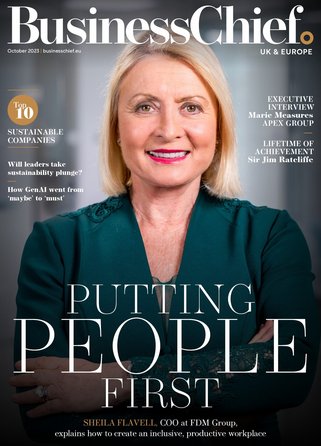Business Continuity During a Global Crisis

Nicole Alvino, Co-founder and Chief Strategy Officer, SocialChorus, outlines the key challenges CIOs face in communicating to their workforce during this crisis and how they can overcome them.
We’re living through an unprecedented time, globally and for how long, none of us are that sure. While the new coronavirus may seem like a singular threat, dealing with crises is a fact of doing business—one companies can expect to encounter with increasing frequency. According to PWC, 69% of businesses had experienced a crisis in the last five years even before COVID-19, and the most disruptive causes of crises in the U.S. were natural or environmental.
Under these conditions, it’s likely that your company already has crisis management and business continuity plans in place. But what should you do to ensure your infrastructure is robust enough and capable of helping you to reach all your workers?
There are five critical challenges that CIOs will face as they try to utilise their stack to reach employees. If you’re a CIO, then you know that you’re the best-equipped person in your executive team to plan for business continuity but to be successful you’re going to need every person, across the entire business to understand your plans. Ultimately, your company is looking for you to:
· Establish a source of truth for your company and communicate with one voice, so employees can separate rumours from facts and trust what they’re being told.
· Reach every worker on every digital channel with the targeted, personalised information they need to respond in an emergency.
· Use intelligent automation to certify message delivery, prompt response, and make sure your crisis communications are not just read but understood.
· Track the success of crisis initiatives and measure the effectiveness of your communications using in-depth analytics.
· Be prepared for emergency situations during COVID-19 and beyond – your stack and your workforce need to prepare for every twist and turn during this pandemic.
As you and the senior leadership team implement your crisis communications strategy you (and they) will ask whether you can reach every employee on every digital channel, even those that are remote. And can you reach them with personalised, up-to-the-minute information that they need? You’ll need to ensure that whatever communications technology you use, whether it be SharePoint, Slack, Zoom, Teams, mobile apps or others, that you can consistently reach and broadcast your company’s messages to all.
One thing we’re hearing is that people are overwhelmed with communications. On average a worker receives 120 emails per day, that’s not counting the ones via other channels such as Slack, IM or Teams. Now consider that your people, like you, are also getting bombarded by emails from school, IM from friends and family and messages via Facebook and WhatsApp. There is an information overload going on so whatever you do, you need to make sure your messages reach people urgently and that they can review them promptly. Our latest paper on CIO Crisis Communications takes you through several steps on how to reach all employees, across all channels, consistently.
Consistency from your business will help to establish trust in your message, especially if you’re able to deliver it immediately to all. And that’s of paramount importance. You don’t want workers in the London office getting communications three hours later than those in Paris or Madrid, or the other side of the world for that matter. All employees are equal, and all deserve to be communicated with, no matter where they are. They may consume your communications in different ways so use your different channels to reach all.
You’ll also need to judge how many times you communicate. Don’t hassle people as we’ve said, they’re inundated with messages already. If you need to know that they’ve received a critical message or piece of advice, then track acknowledgements or read receipts. Then you can take further communications actions with those that are unresponsive and not send repeat messages company-wide.
SEE ALSO:
-
Startup Afya Rekod launches AI data platform to curb COVID-19
-
Read the latest issue of Business Chief, Africa edition, here
COVID-19 is changing the way we live and the way we work. In a world where change seems to be the only constant be the consistent voice across your organisation. Your emergency plans may need to be tweaked over the coming weeks, your infrastructure might need to be extended to ensure your reach is truly companywide but remember it is the companies that manage this situation well that will thrive through the chaos.
For more information on business topics in Africa, please take a look at the latest edition of Business Chief Africa.
- Leadership development remains critical to successLeadership & Strategy
- Five Minutes With: Björn Dufwenberg, MD at Strat7 AdvisoryLeadership & Strategy
- Building bridges between management and productivityLeadership & Strategy
- How analogous inspiration can solve your strategic deadlockLeadership & Strategy



